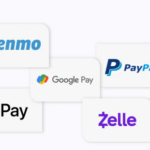About Flare Airdrop
Flare Airdrop is a brand new blockchain community primarily based totally at the Flare Consensus Protocol – the primary Turing Complete Federated Byzantine Agreement protocol. Flare’s local token can be an algorithmically managed, pegged stablecoin, aiming to preserve community utilization prices predictable and imparting a number one enter for DeFi use cases.
Flare is airdropping a complete pool of forty five Billion SPARK tokens to eligible XRP holders. All holders except Ripple Labs, sure preceding personnel of Ripple Labs and others noted withinside the assertion web page can be eligible to acquire the SPARK tokens.
The image can be taken at the primary confirmed XRP ledger index quantity with a timestamp extra than or same to 00:00 GMT on twelfth December 2020. If you’re retaining your XRP in a personal pockets then you may have to set the Message Key subject to your XRP Ledger deal with in your Flare deal with and if you’re retaining XRP on a assisting exchange, then you’re already set to acquire the tokens.
| Platform | Total value | KYC | Website |
|---|---|---|---|
| Own chain | 45,000,000,000 SPARK | KYC for users is NOT a requirement | Click Here To Visit |
Registering the external-system state on the Flare Network
Each state-connector periodically samples and then independently registers claims to the Flare Network that were
previously unregistered by that state-connector in order to construct their own local definition of the current claim-period.
Claims do not automatically reach finality such that a non-reversible action occurs on the Flare Network given only a
registration of a claim by a state-connector.
A state-connector requires that a sufficient number of other state-connectors which it has chosen to rely on for consensus within its node operator’s UNL have also registered the claim and finalised it as part of a claim-period set. The finality of a claim-period set is defined concretely then in the following section.
Network Complexity
The communication complexity of the Avalanche consensus protocol is O(kn log n). This means that it
is necessary to bound the size of k while preserving the quorum intersection property. The following demonstrates
an approach to reducing the communication complexity of Avalanche in the FBA setting, however, for the purposes.
of simplicity in safety analysis of the Flare Network, we discuss why we recommend not following the approach. In [CC19], Chitra et. al propose a method that relies on Y independently drawn k − 1 element subsets of the nodes in the network, where Y ∼ Poisson(λ).
The world’s first Turing complete FBA network
Scalable and doesn’t base safety on a native token. No risk of safety degradation from competing uses of native token. Integrates Ethereum Virtual Machine. Deep pool of developer talent and easier integration of existing projects. Low transaction costs. Applications can scale without users incurring burdensome costs.
The Flare Network
In this section, an overview of the Flare Network is first presented in 2.1, which includes a discussion on the network consensus, as well as its safety, complexity and liveness considerations. In subsection 2.2, the process of achieving consensus on the state of any deterministic system external to the network for use in downstream applications, such as the XRP Ledger state for use in FXRP on Flare, is presented.
The Spark token
The Spark token is the intrinsic currency of the Flare Network. Its technical use to curtail network spam is introduced in 3.1. Next, the applications of Spark are presented in section 3.2. The creation, distribution and apportionment methodologies for Spark are then specified in








